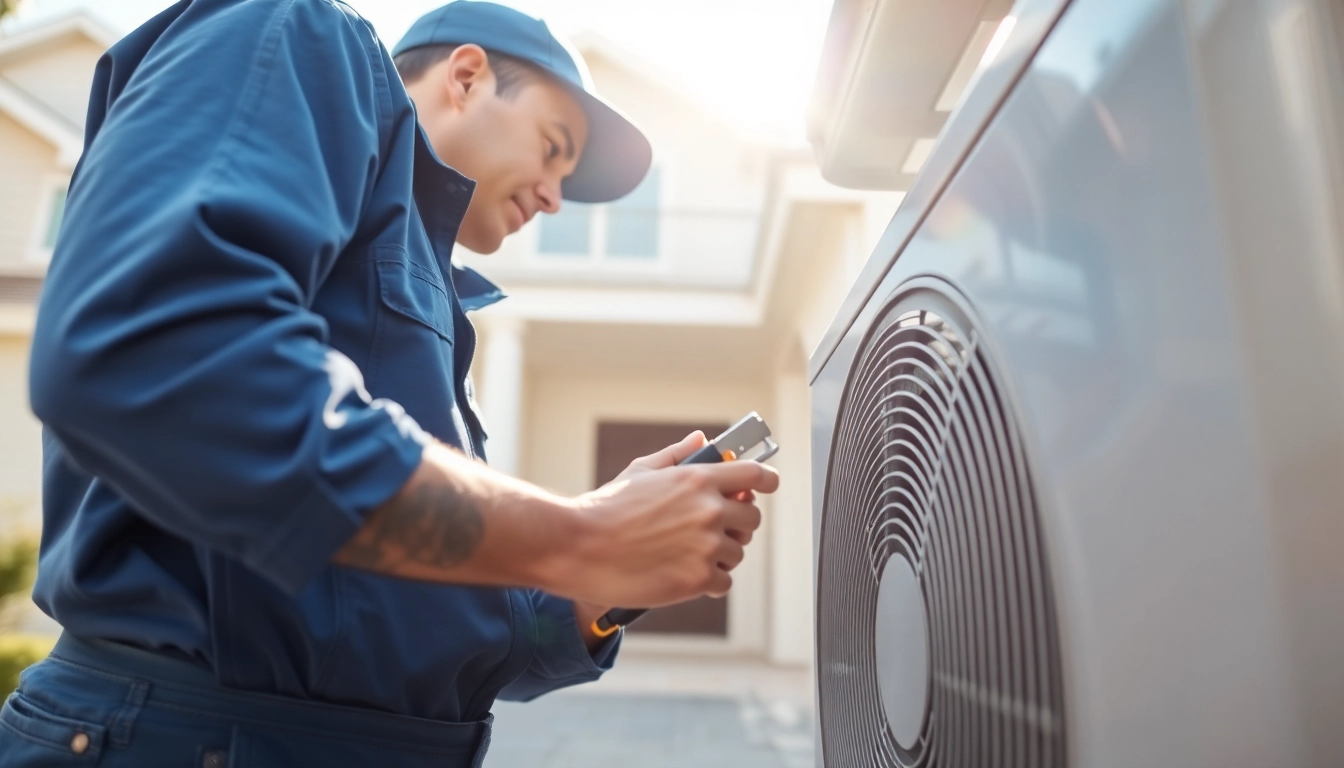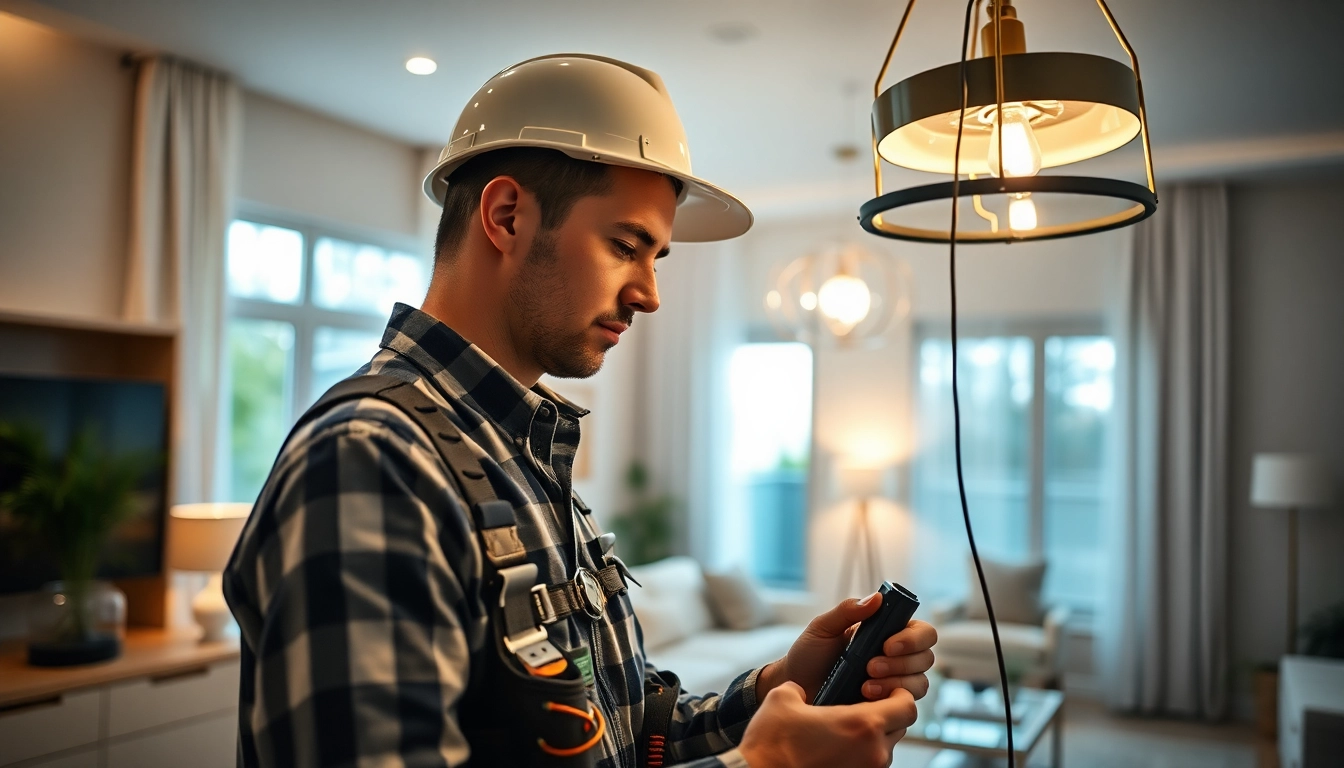Understanding Electrical Service
What is Electrical Service?
Electrical service refers to the entire process of supplying, managing, and maintaining electrical power in residential, commercial, and industrial settings. This includes everything from the initial connection to the power grid, wiring, circuit breakers, and the service panels that distribute electricity throughout a building. Essentially, it is the lifeline of electrical infrastructure that provides energy to power our everyday lives.
Accessibility to reliable electrical service is paramount in today’s world, where technology increasingly demands significant power usage. For tailored services, exploring Electrical Service options can make a notable difference in efficiency and reliability.
Importance of Professional Electrical Service
Hiring a professional for electrical service is crucial for several reasons. Firstly, safety is paramount; improper handling of electrical systems can lead to fires, electrocutions, and extensive damage. Certified electricians are trained to comply with local codes and regulations, minimizing risks associated with electrical installations and repairs.
Additionally, professionals possess the experience and expertise to diagnose and resolve issues efficiently. This not only saves time but also ensures that the electrical systems function optimally, providing a stable power supply. In contrast, amateur work can often lead to repeated problems and increased costs down the line.
Common Types of Electrical Services
Electrical services encompass a broad spectrum of tasks. Here are some of the most common types:
- Residential Electrical Services: Includes home wiring, lighting installations, and electrical repairs.
- Commercial Electrical Services: Focuses on larger projects like office buildings, retail spaces, and industrial electrical installations.
- Emergency Electrical Services: Available for urgent issues that require immediate attention, such as outages or faulty wiring.
- Upgrades and Renovations: Involves replacing outdated systems to meet current electrical demands and improve energy efficiency.
- Testing and Inspections: Routine check-ups to ensure electrical systems are safe and functioning properly.
Key Components of Electrical Service
Electrical Service Panels Explained
The electrical service panel is often considered the heart of a building’s electrical system. It acts as a central hub where electricity from the utility company enters your property. The panel distributes power through various circuits to different parts of the building. Understanding its components and functionalities is crucial for homeowners and business owners alike.
Most panels are equipped with circuit breakers or fuses that interrupt power in the event of an overload or short circuit—enhancing safety measures. Regular inspections and updates to service panels can help prevent significant issues such as electrical fires.
Circuit Breakers and Their Function
Circuit breakers play a vital role in protecting both lives and property from electrical overloads. They are designed to trip and shut off the power when an overload is detected, typically at the source, such as the service panel. This safety mechanism is not only essential for preventing fire hazards but also for safeguarding expensive electrical appliances.
Modern homes often use GFCI (Ground Fault Circuit Interrupter) breakers in areas of potential moisture, such as kitchens and bathrooms, to provide heightened safety. Understanding the difference between fuses and circuit breakers is key—fuses require replacement when blown, while breakers can simply be reset.
Understanding Wiring Systems
Wiring systems are the arteries through which electricity flows within a building. Properly installed and maintained wiring is essential for safety and performance. Common types of wiring include:
- Non-Metallic Sheathed Cable (NM): Common for residential wiring, NM is versatile and easy to install.
- Armored Cable (AC): Used in areas exposed to mechanical damage, offering extra protection.
- Underground Feeder Cable (UF): Designed for direct burial to provide outdoor power supply.
A professional electrician can ensure that the correct type of wiring is used based on the specific needs and regulations of your building.
Choosing the Right Electrical Service Provider
Evaluating Credentials and Experience
When selecting an electrical service provider, it is imperative to evaluate their credentials. Ensure they are licensed, insured, and certified to perform electrical work in your area. This not only reflects their capability but also safeguards you from potential liabilities.
It’s advantageous to choose a provider with solid experience in the specific type of work you require, whether it’s residential, commercial, or emergency electrical services. Verifying these credentials can provide peace of mind that the job will be performed correctly and safely.
Customer Reviews and Testimonials
Customer feedback is a powerful tool when selecting an electrical service provider. Reviews can offer insight into the company’s reliability, professionalism, and quality of work. Look for testimonials on their website, social media, and third-party review sites.
Moreover, don’t hesitate to ask for references or case studies from past projects—this helps to confirm their credibility. A trustworthy provider will likely be more than willing to share positive outcomes and customer experiences.
Comparing Service Provisions and Cost
Services and pricing can vary significantly among electrical providers. Take time to compare quotes from multiple companies, but remember that the lowest price doesn’t always guarantee the best work. Assess what’s included in the service costs, such as parts, labor, and warranties.
Consider looking for a provider who offers transparent pricing structures and detailed estimates, revealing any potential additional costs upfront. This can help avoid surprises once the project commences.
Common Issues Requiring Electrical Service
Signs of Electrical Problems in Your Home
Being aware of the signs of electrical issues can save you from potential hazards. Common indicators include:
- Frequent blown fuses or tripped breakers.
- Flickering or dimming lights, especially when appliances are in use.
- Buzzing sounds from switches or outlets.
- Warm or discolored outlets and switches.
- Burning smells in areas near electrical appliances or cords.
If you notice one or more of these issues, it is crucial to contact a professional electrician immediately to prevent further complications.
When to Upgrade Your Electrical Service
Upgrading your electrical service may be necessary for various reasons, including:
- Increased power needs due to home renovations or additional electronic devices.
- Electrical systems older than 20 years, which may not align with current safety standards.
- Excessive electrical issues, such as frequent outages or malfunctioning appliances.
Consulting with a certified electrician can help determine whether an upgrade is essential based on your specific situation and requirements.
Emergency Electrical Services: What to Know
Emergencies can occur without warning and often require immediate action to eliminate hazards. Knowing the basics of emergency electrical services is important:
Emergency services typically include fixing power outages, faulty wiring issues, and electrical fires. Having the contact information of a reliable emergency electrician on hand can expedite response times during critical situations.
When facing an emergency, it’s essential to act responsibly—if there’s any risk of a fire or severe shock, do not attempt to troubleshoot the issue yourself, and contact professionals immediately.
Best Practices for Electrical Service Maintenance
Regular Inspection and Safety Checks
Routine inspections of electrical systems can help prevent costly repairs and ensure a safe environment. Homeowners should schedule professionals to inspect their electrical systems at least once every three to five years. These inspections should include:
- Checking the condition of the service panel.
- Testing circuit breakers and fuses.
- Evaluating wiring systems for signs of wear or deterioration.
- Examining outlets and switches for safety compliance.
Staying proactive about maintenance can significantly reduce risks and extend the lifespan of electrical components.
Upgrades and Improvements to Consider
As technology evolves, upgrading electrical systems can improve efficiency and safety. Options for upgrades include:
- Installing smart home systems for better energy management.
- Replacing incandescent bulbs with energy-efficient LED lighting.
- Upgrading service panels to accommodate modern appliances and higher power demands.
Consulting with an electrician can help guide which upgrades are best suited for your property and lifestyle.
How to Minimize Electrical Service Costs
While electrical services can incur significant expenses, there are strategies to minimize costs:
- Perform minor repairs promptly to prevent bigger issues.
- Compare quotes and scope of work from multiple providers.
- Engage in regular maintenance to avoid costly breakdowns.
- Opt for energy-efficient appliances to reduce usage and overall energy costs.
Being proactive and informed will ultimately lead to better choices and savings in the long run.












Leave a Reply